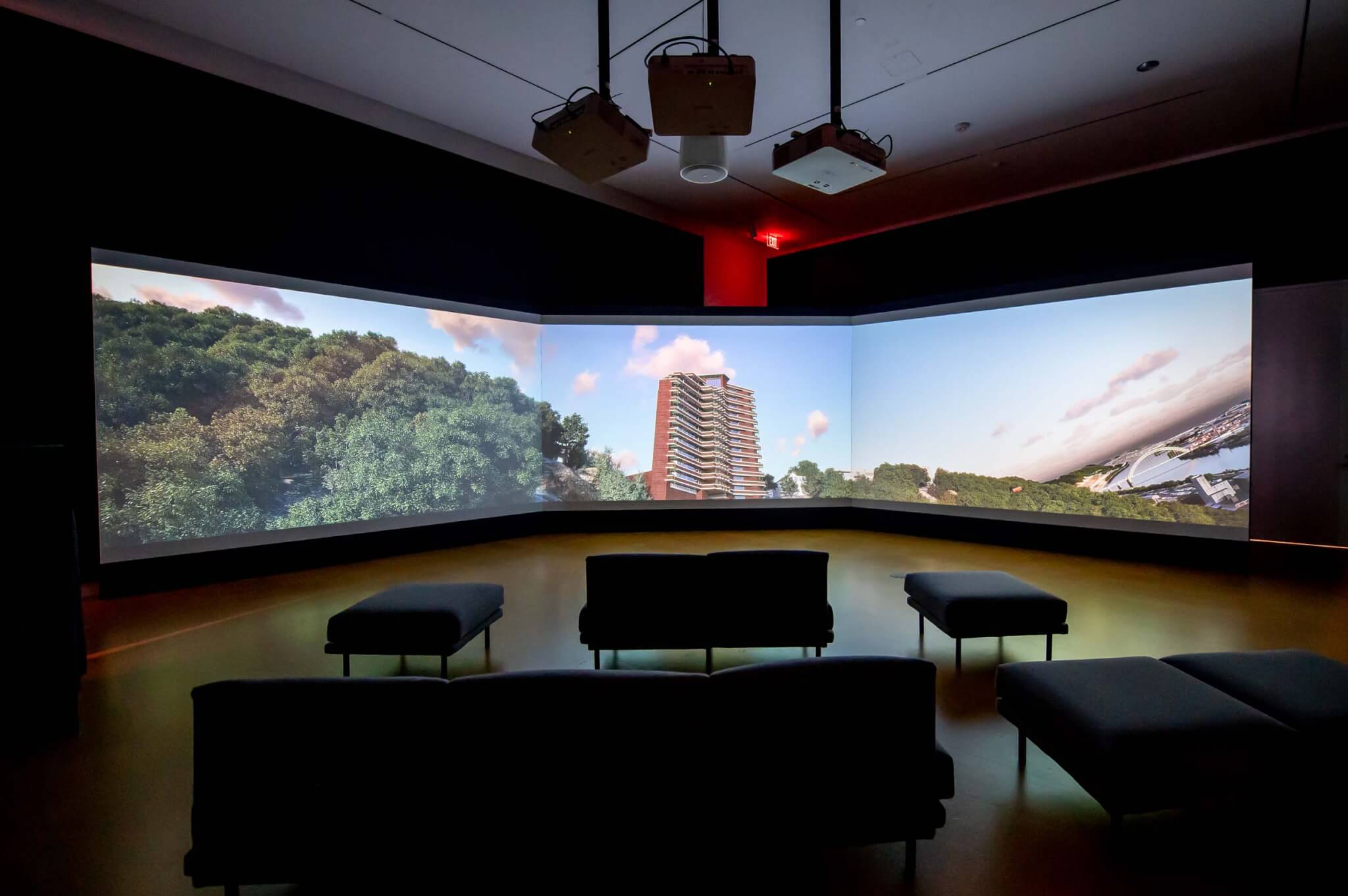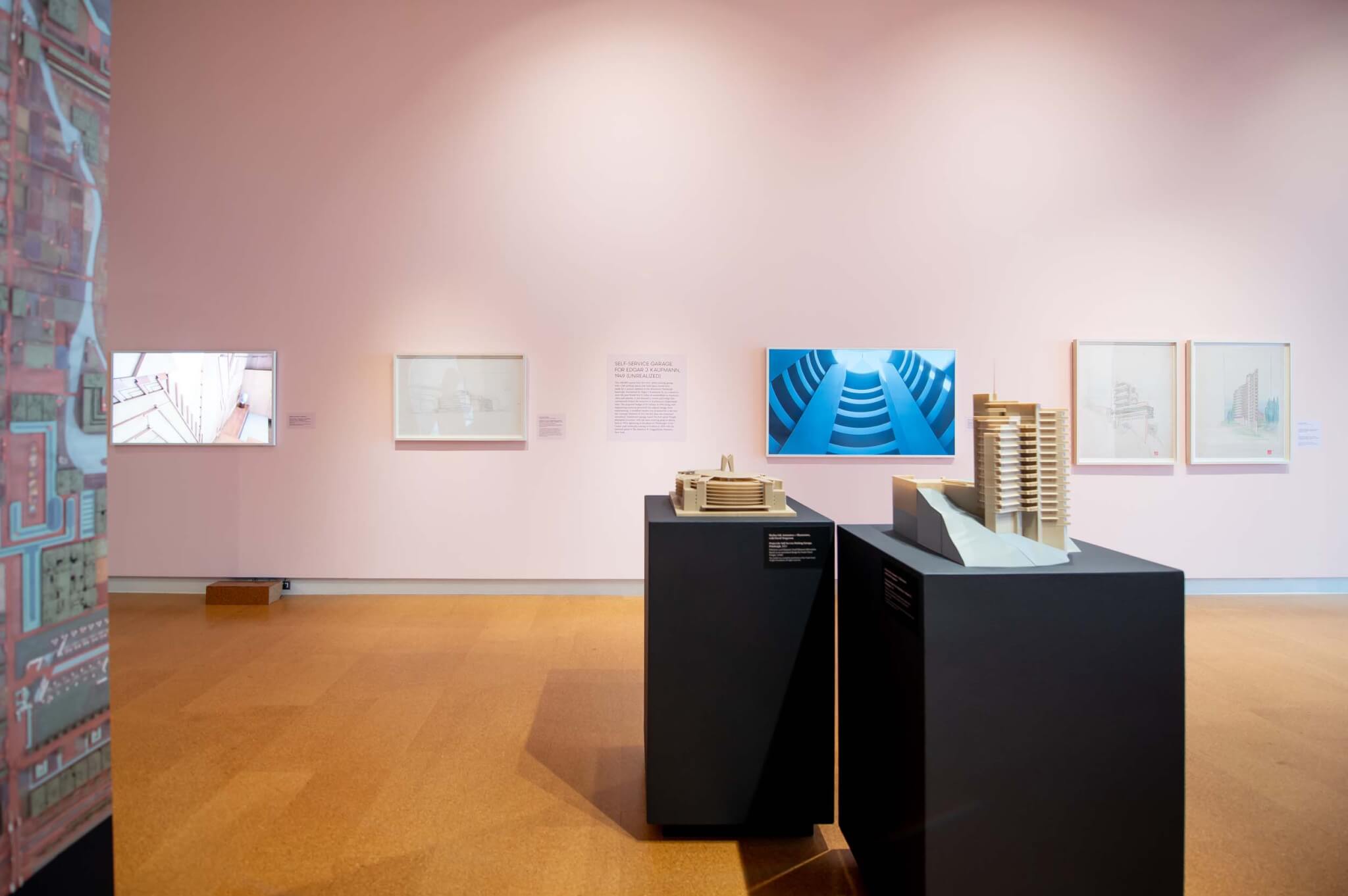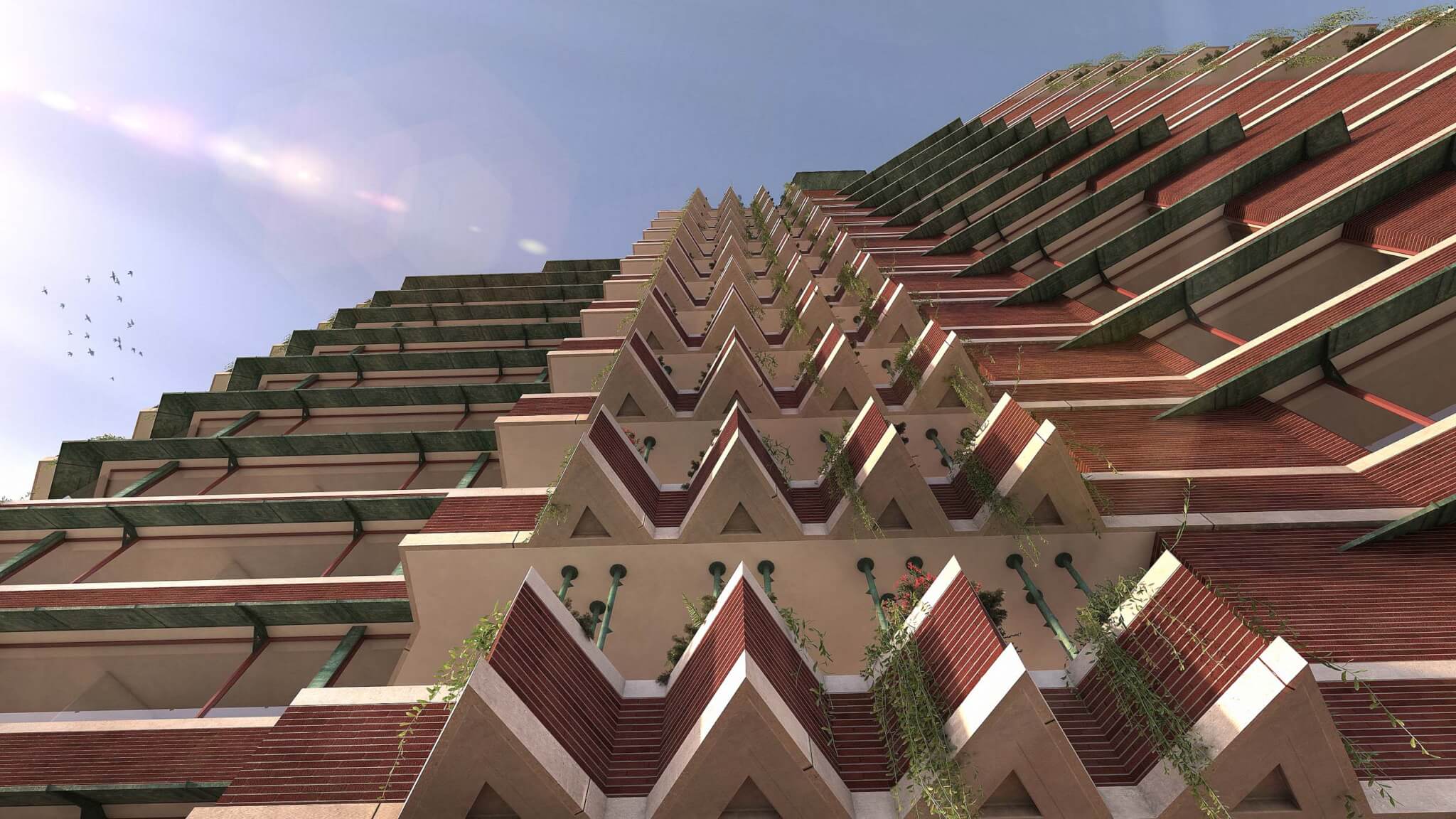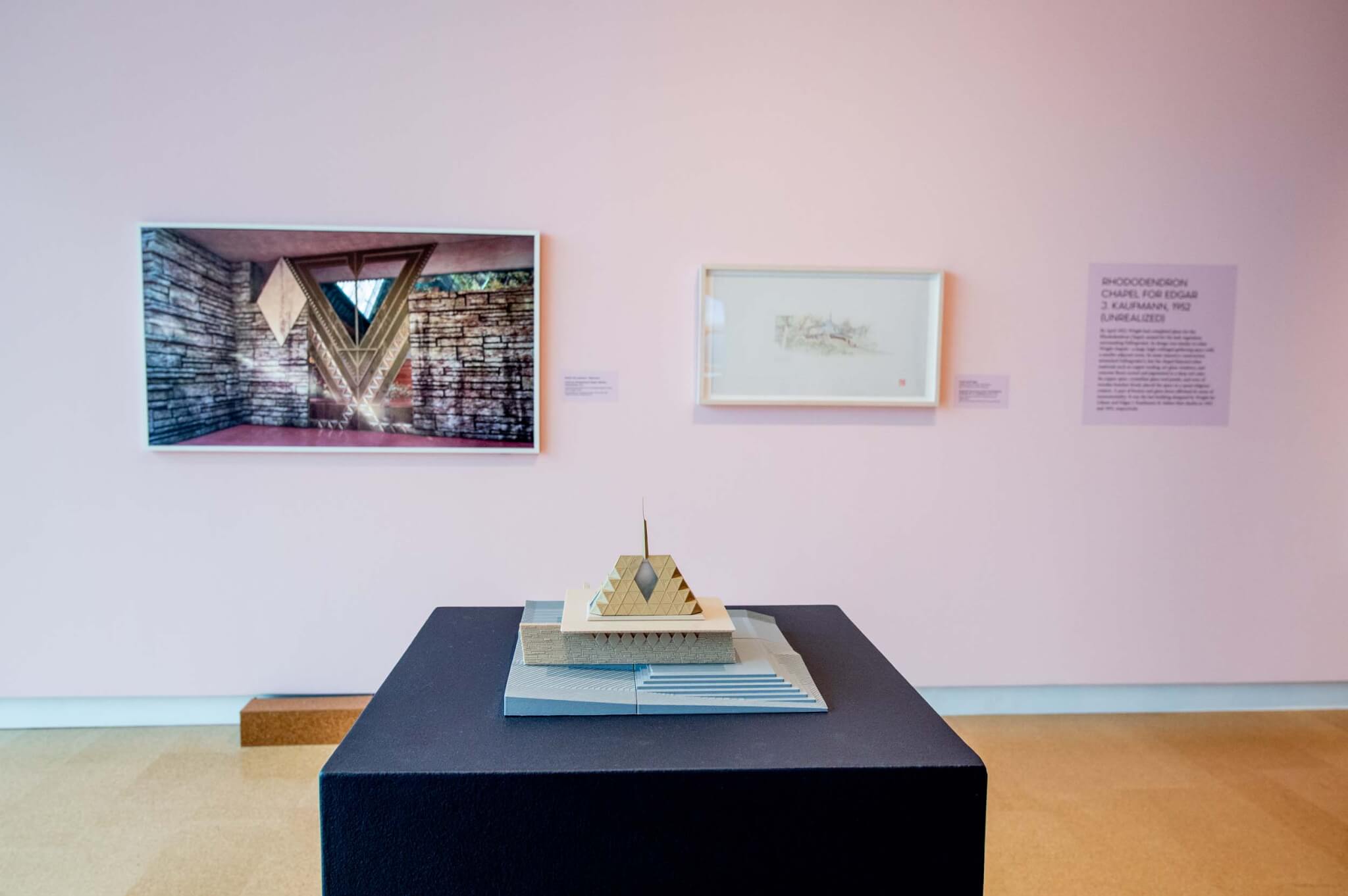Frank Lloyd Wright’s Southwestern Pennsylvania
The Westmoreland Museum of Art
221 N. Main Street
Greensburg, PA 15601
October 15, 2023—January 15, 2024
Fallingwater is one of his most notable buildings, but there’s a good chance you don’t know the other half of Frank Lloyd Wright’s oeuvre. Frank Lloyd Wright’s Southwestern Pennsylvania, hosted at the Westmoreland Museum of Art, explores both realized works and paper architecture, including a residential highrise, a parking garage, and the white elephant of his Pittsburgh Civic Center complex. This clutch of Wright projects filled out a chapter of Neil Levine’s The Urbanism of Frank Lloyd Wright (which the curators cited as an inspiration) and receives a gripping due here. The show is now closed, but the exhibition travels to the National Building Museum in April 2024.

Jeremiah William McCarthy, chief curator at the Westmoreland, explained the exhibit’s aim to both provide a primer for the relatively uninitiated and “recontextualize Wright for people who are very familiar.” The ultra-fresh context here consists of the most vivid renderings yet of his ambitious plans for Pittsburgh. We’ve known for a while that the image of Wright as permanent pastoralist is something of a canard, but this has rarely been so persuasively demonstrated—here, viewers instead see a quixotic lunatic.

The exhibit features plans, renderings, drawings, photographs, and models, as exhibits do. But the curators aimed for something more than a traditional retrospective. Scott W. Perkins, senior director of preservation and collections at Fallingwater, explained, “Our initial goal was to help illustrate a futuristic vision by exploring the projects Wright had done—for Pittsburgh especially—by utilizing present-day technology to re-create them in virtual form.”
This sort of talk is usually cause for concern; CGI museum videos are usually about as riveting as airport PSAs. Not this time.
Brian Eyerman is the founder and CEO of Skyline Ink, a video and animation studio with a portfolio of museological and art history projects. Eyerman is a trained architect and skilled animator who knows exactly what he’s doing in both capacities. There were wildly varying amounts of information available to draw upon for this work. They had a reasonable amount of content for the Rhododendron chapel and gatehouse projects, but some squinting was required. Three unbuilt Fallingwater projects were re-animated from sparse primary sources. In a number of cases, they looked to comparable project details to fill out details that weren’t clear. For example, Eyerman discovered exact matches between details on an unbuilt garage for Edgar Kaufmann (who commissioned Fallingwater) and the Guggenheim, so could easily look to the latter for modeling.

The real monster was recreating Wright’s civic center complex—a project purporting to combine an arena, convention center, opera house, multiple theaters, an aquarium, two bridges, and a few more things because that might not have been enough. Kaufmann paid for the plan, and engaged in some high-minded chicanery, never quite explaining to civic leaders just how preposterous a project he hoped to bring them. Its capacity of 123,000 would have been one-fifth of the city’s population at the time.
Wright was quoted at the time saying, “The entire scheme is arranged with adequate trees, shrubs, grass, and gardening, all of which, taken in connection with the broad expanse of flowing river-surface, render the whole architectural mass gentle and humane.” Every angle of the video is engrossing, which brings the complex to life in a way that even relatively ample presentation drawings don’t. Gardens hang over the whole thing, circulation is fascinating, and the sheer number of permeable indoor-outdoor layers to the project delivers a visceral thrill. The glassy orbs of his aquarium tanks look more like Moebius drawings than anything we’ve succeeded in building to date.

The design was resolutely not one from an age of easy replication in computer modeling, however. Eyerman described it as one of his most laborious in 25 years of this work, “It was a tapered helix where absolutely nothing repeats up the building which means everything had to be modeled and merged.”
Eyerman modeled more than he was able to animate, and declared his eagerness to finish the job. It’s a tantalizing prospect for a first-person flaneur video game.
Anthony Paletta is a writer living in Brooklyn.











